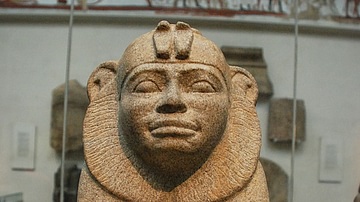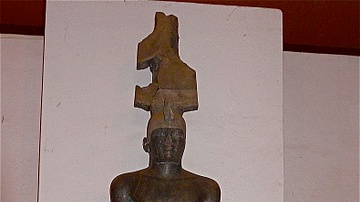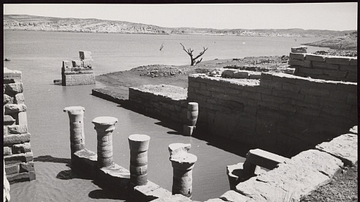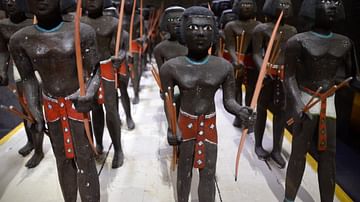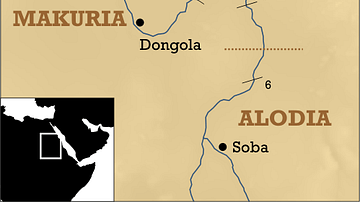Illustration
Detail of a large gypsum wall panel, depicting the Assyrian attack on a fortress at the Egyptian city of Memphis in 667 BCE, Panel 17, Room M of the North Palace at Nineveh, Northern Mesopotamia, modern-day Iraq, Neo-Assyrian Empire, 645-635 BCE.
The Nubian soldiers of King Taharqa (of the 25th Dynasty) are being led, as prisoners, by the Assyrian soldiers of Ashurbanipal II. The heads of the Nubian soldiers are clearly recognizable by their scalp hair and facial features. They wear short kilts and are bare-footed. They are handcuffed. On the right, two Assyrian soldiers hold decapitated heads of defeated Nubians; one soldier holds two heads while the other one holds one head with his right hand and a sword with his left hand. At the left upper part, an Assyrian soldier tries to undermine the wall of the fortress. Part of an Egyptian civil prisoner appears on the extreme right.
The British Museum, London.
About the Author
Cite This Work
APA Style
Amin, O. S. M. (2018, March 22). Assyrian Soldiers Holding Decapitated Heads of Nubian Soldiers. World History Encyclopedia. Retrieved from https://www.worldhistory.org/image/8416/assyrian-soldiers-holding-decapitated-heads-of-nub/
Chicago Style
Amin, Osama Shukir Muhammed. "Assyrian Soldiers Holding Decapitated Heads of Nubian Soldiers." World History Encyclopedia. Last modified March 22, 2018. https://www.worldhistory.org/image/8416/assyrian-soldiers-holding-decapitated-heads-of-nub/.
MLA Style
Amin, Osama Shukir Muhammed. "Assyrian Soldiers Holding Decapitated Heads of Nubian Soldiers." World History Encyclopedia. World History Encyclopedia, 22 Mar 2018, https://www.worldhistory.org/image/8416/assyrian-soldiers-holding-decapitated-heads-of-nub/. Web. 17 Jul 2025.



